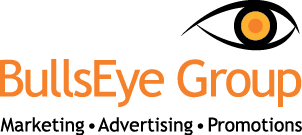Frequently Asked Questions
What services do you offer?
We are a full service marketing communications firm and can help you with as much or as little as you need depending on what you want to accomplish. If we’re not the right fit for your needs, we’ll gladly tell you and help you find the right resource. Our planning and creative services include but are not limited to:
- Market research, customer interviews and surveys to help us fully understand how you’re perceived and where your greatest opportunities and threats lie.
- Company/product naming, logo design, corporate identity implementation and logo/brand usage guidelines.
- Brand positioning and messaging strategy creation and ad plan development.
- Creative concept and design of all program elements including print/broadcast ads, corporate/product brochures, direct mail, e-newsletters, websites, digital media, trade shows/events, product packaging and point-of-sale materials/displays.
- Print/online media planning and buying.
- Print production services.
- Trade show/event planning, design and implementation.
- Public relations and editorial support.
- Website creation and maintenance.
- Branded apparel and promotional products.
How do you charge for your services?
As a professional services firm, our unit of sale is our time and the knowledge, ideas and skills required to develop and implement programs efficiently and cost-effectively. We have an hourly rate structure for our various planning, creative and production activities that are combined with any outside production costs required such as photography, printing, mailing and hosting to create project estimates for client approval. Our experience allows us to be “quick studies” so once budgets, plans and schedules are approved, we get to work quickly making positive things happen for your brand.
What size companies do you work with?
We work with companies large and small, local and global. Our clients range in size from less than one million in annual sales to hundreds of millions. Our main criteria for choosing companies we work with is that they have an understanding of and appreciation for the role marketing/advertising plays in their business, they’re willing to listen to and follow the advice they are paying us to provide them and they are ready to commit the resources needed to achieve their stated objectives. If clients don’t possess these traits, our relationship and odds for success will not be very good.
How do we get started on a project or new program?
We start with a meeting with key decision-makers and marketing/advertising stakeholders to go through what we call The Discovery Process. This creates a dialog that begins defining short and long-term needs and objectives, challenges, threats and opportunities. It also involves a thorough review of all current marketing/advertising materials and often times, talking to key customers and/or prospects, sales personnel, distribution partners or any other critical audiences. We then begin development of a plan, budget and schedule that involves our three-step process of POSITIONING, LOCATING and CONNECTING.
If you just need help with an immediate project, we’re happy to help with it as well but this still requires getting answers to some critical questions such as the marketing situation, objectives, target audiences, key messaging to support WHY MY BRAND, offer/incentive to motivate action, budget, timing and all the necessary reference files for logos/guidelines, images, art and copy.
How do you determine the success of your work?
The best way is to have a happy client that tells you “nice job.” However, with today’s technologies, there are many ways to track and evaluate how your marketing investment is performing as long as you have defined objectives and the tools in place to monitor your programs. Key measurement metrics can include awareness/preference levels, calls to 800#s, email requests, new e-newsletter subscribers, attendance at events, requests for information, new accounts opened, referrals provided, click thrus to specific URLs, website visits and time spent on key web pages, video views, Facebook likes, LinkedIn connections and Twitter followers.
The real key to measuring the success of any marketing campaign is differentiating between short-term and long-term results and understanding which metrics have the greatest correlation to building awareness, interest, preference, sales and brand loyalty.

